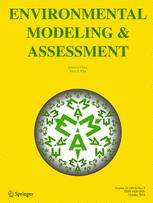Ver ítem
- xmlui.general.dspace_homeCentros e Institutos de InvestigaciónCIRN. Centro de Investigaciones de Recursos NaturalesInstituto de Clima y AguaArtículos científicosxmlui.ArtifactBrowser.ItemViewer.trail
- Inicio
- Centros e Institutos de Investigación
- CIRN. Centro de Investigaciones de Recursos Naturales
- Instituto de Clima y Agua
- Artículos científicos
- Ver ítem
Attribution of carbon dioxide fluxes to crop types in a heterogeneous agricultural landscape of Argentina
Resumen
The increasing proportion of agricultural lands worldwide makes it necessary to intensify the research concerning the carbon exchange at agricultural sites. In order to determine the Net Ecosystem Exchange (NEE) in an agricultural landscape in the province of Buenos Aires, Argentina, we carried out eddy covariance measurements with a flux tower, which was placed between two agricultural fields. Therefore, the measured CO2 flux represents the accumulated
[ver mas...]
The increasing proportion of agricultural lands worldwide makes it necessary to intensify the research concerning the carbon exchange at agricultural sites. In order to determine the Net Ecosystem Exchange (NEE) in an agricultural landscape in the province of Buenos Aires, Argentina, we carried out eddy covariance measurements with a flux tower, which was placed between two agricultural fields. Therefore, the measured CO2 flux represents the accumulated flux from both areas, i.e., from different crop types. We here present an analysis method which attributes the flux to the two crop types. For this analysis, we applied the Hsieh footprint model to identify the contributing source area to the flux measurement. We then applied a multiple regression analysis to calculate the NEE in the growing season 2011/2012 for each field separately. The pronounced differences in the time courses of the CO2 fluxes in the two fields can be explained by the different sowing times and different growth stages of both cultivations. The time courses furthermore show that the CO2 uptake of the plants was strongly affected by the drought which lasted from December 2011 to January 2012. For the growth cycle of maize (216 days), the NEE was −240 g C m−2 and for the growth cycle of soybean (154 days) −231 g C m−2. In order to obtain the NEE of a complete agricultural cycle (from harvest to harvest), we also considered the NEE of autumn and winter 2011. Uncertainties of the spatially partitioned NEE are quantified and discussed.
[Cerrar]

Fuente
Environmental modeling & assessment 19 (5) : 361–372. (October 2014)
Fecha
2014-10
Editorial
Springer
ISSN
1420-2026
1573-2967 (Online)
1573-2967 (Online)
Formato
pdf
Tipo de documento
artículo
Palabras Claves
Derechos de acceso
Restringido
 Excepto donde se diga explicitamente, este item se publica bajo la siguiente descripción: Creative Commons Attribution-NonCommercial-ShareAlike 2.5 Unported (CC BY-NC-SA 2.5)
Excepto donde se diga explicitamente, este item se publica bajo la siguiente descripción: Creative Commons Attribution-NonCommercial-ShareAlike 2.5 Unported (CC BY-NC-SA 2.5)

